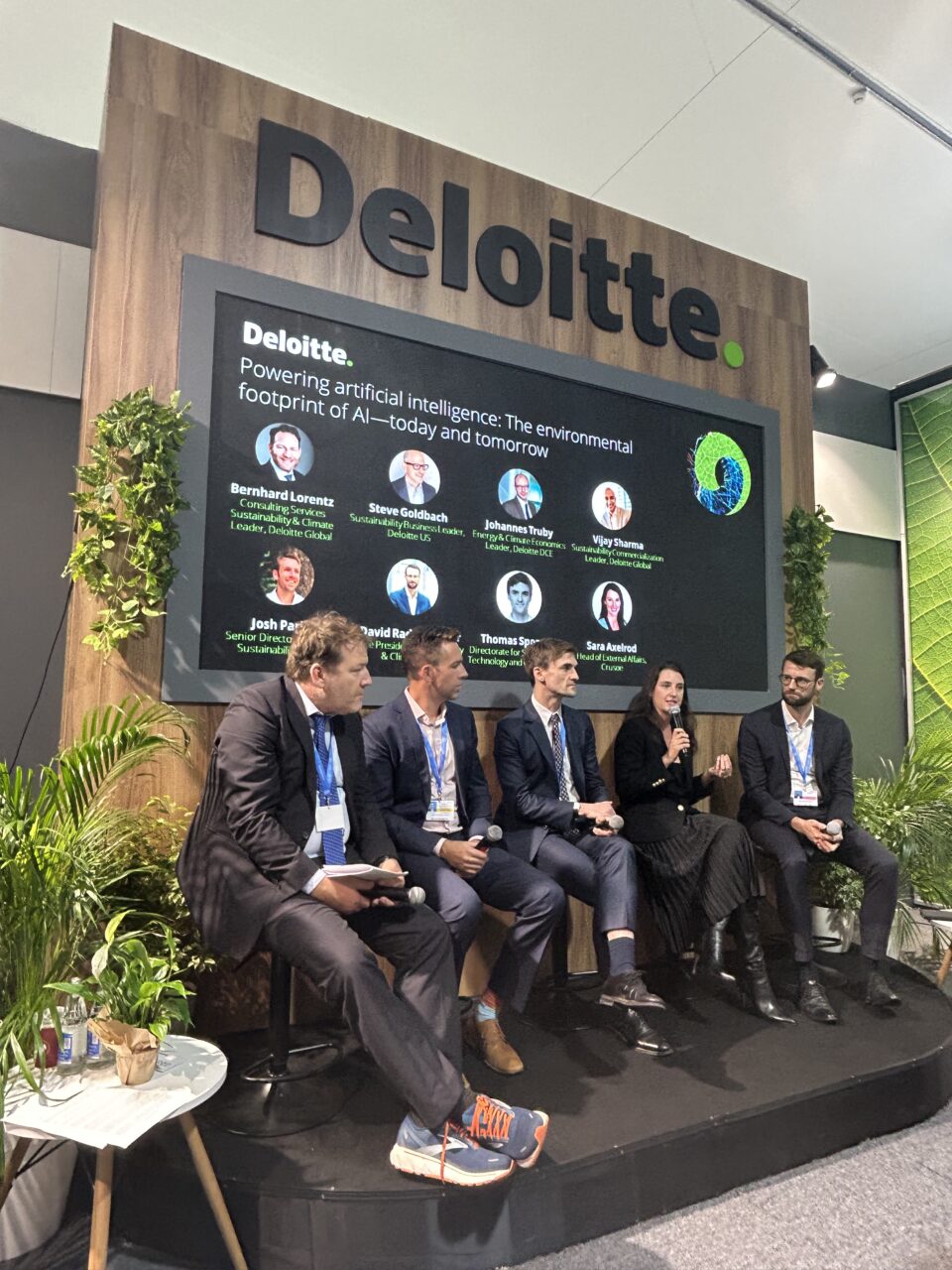As COP29 attendees gather in Baku, Azerbaijan, to tackle climate change, the role AI plays in environmental sustainability is front and center.
A panel hosted by Deloitte brought together industry leaders to explore ways to reduce AI’s environmental footprint and align its growth with climate goals.
Experts from Crusoe Energy Systems, EON, the International Energy Agency (IEA) and NVIDIA sat down for a conversation about the energy efficiency of AI.
The Environmental Impact of AI
Deloitte’s recent report, “Powering Artificial Intelligence: A study of AI’s environmental footprint,” shows AI’s potential to drive a climate-neutral economy. The study looks at how organizations can achieve “Green AI” in the coming decades and addresses AI’s energy use.
Deloitte analysis predicts that AI adoption will fuel data center power demand, likely reaching 1,000 terawatt-hours (TWh) by 2030, and potentially climbing to 2,000 TWh by 2050. This will account for 3% of global electricity consumption, indicating faster growth than in other uses like electric cars and green hydrogen production.
While data centers currently consume around 2% of total electricity, and AI is a small fraction of that, the discussion at COP29 emphasized the need to meet rising energy demands with clean energy sources to support global climate goals.
Energy Efficiency From the Ground Up
NVIDIA is prioritizing energy-efficient data center operations with innovations like liquid-cooled GPUs. Direct-to-chip liquid cooling allows data centers to cool systems more effectively than traditional air conditioning, consuming less power and water.
“We see a very rapid trend toward direct-to-chip liquid cooling, which means water demands in data centers are dropping dramatically right now,” said Josh Parker, senior director of legal – corporate sustainability at NVIDIA.
As AI continues to scale, the future of data centers will hinge on designing for energy efficiency from the outset. By prioritizing energy efficiency from the ground up, data centers can meet the growing demands of AI while contributing to a more sustainable future.
Parker emphasized that existing data center infrastructure is becoming dated and less efficient. “The data shows that it’s 10x more efficient to run workloads on accelerated computing platforms than on traditional data center platforms,” he said. “There’s a huge opportunity for us to reduce the energy consumed in existing infrastructures.”
The Path to Green Computing
AI has the potential to play a large role in moving toward climate-neutral economies, according to Deloitte’s study. This approach, often called Green AI, involves reducing the environmental impact of AI throughout the value chain with practices like purchasing renewable energy and improving hardware design.
Until now, Green AI has mostly been led by industry leaders. Take accelerated computing, for instance, which is all about doing more with less. It uses special hardware — like GPUs — to perform tasks faster and with less energy than general-purpose servers that use CPUs, which handle a task at a time.
That’s why accelerated computing is sustainable computing.
“Accelerated computing is actually the most energy-efficient platform that we’ve seen for AI but also for a lot of other computing applications,” said Parker.
“The trend in energy efficiency for accelerated computing over the last several years shows a 100,000x reduction in energy consumption. And just in the past 2 years, we’ve become 25x more efficient for AI inference. That’s a 96% reduction in energy for the same computational workload,” he said.
Reducing Energy Consumption Across Sectors
Innovations like the NVIDIA Blackwell and Hopper architectures significantly improve energy efficiency with each new generation. NVIDIA Blackwell is 25x more energy-efficient for large language models, and the NVIDIA H100 Tensor Core GPU is 20x more efficient than CPUs for complex workloads.
“AI has the potential to make other sectors much more energy efficient,” said Parker. Murex, a financial services firm, achieved a 4x reduction in energy use and 7x faster performance with the NVIDIA Grace Hopper Superchip.
“In manufacturing, we’re seeing around 30% reductions in energy requirements if you use AI to help optimize the manufacturing process through digital twins,” he said.
For example, manufacturing company Wistron improved energy efficiency using digital twins and NVIDIA Omniverse, a platform for developing OpenUSD applications for industrial digitalization and physical AI simulation. The company reduced its electricity consumption by 120,000 kWh and carbon emissions by 60,000 kg annually.
A Tool for Energy Management
Deloitte reports that AI can help optimize resource use and reduce emissions, playing a crucial role in energy management. This means it has the potential to lower the impact of industries beyond its own carbon footprint.
Combined with digital twins, AI is transforming energy management systems by improving the reliability of renewable sources like solar and wind farms. It’s also being used to optimize facility layouts, monitor equipment, stabilize power grids and predict climate patterns, aiding in global efforts to reduce carbon emissions.
COP29 discussions emphasized the importance of powering AI infrastructure with renewables and setting ethical guidelines. By innovating with the environment in mind, industries can use AI to build a more sustainable world.
Watch a replay of the on-demand COP29 panel discussion.
